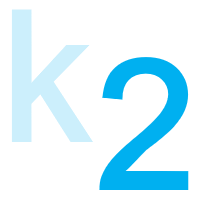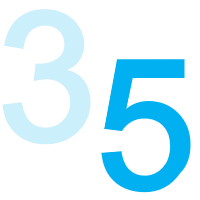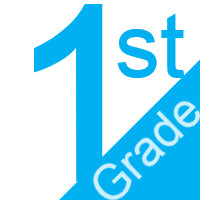1st Grade English
 Standards Glossaries
Standards Glossaries
| K Grade English | 1st Grade English | 2nd Grade English |
 Standards Glossaries
Standards Glossaries
| 3rd Grade English | 4th Grade English | 5th Grade English |
 Standards Glossaries
Standards Glossaries
| 6th Grade English | 7th Grade English | 8th Grade English |
 Standards Glossaries
Standards Glossaries
| 9th Grade English | 10th Grade English | 11th Grade English | 12th Grade English |
 Standards Glossaries
Standards Glossaries
| HS Journalism | HS Speech |
E |
|---|
ELA-01.RI.10
ELA-01.RI.10 With prompting and support, read informational texts appropriately complex for grade 1.Student Learning Targets:Knowledge Targets
Reasoning Targets
Skills (Performance) Targets
Proficiency ScaleThe student can ...1 Beginning... with help, demonstrates a partial understanding of some of the simpler details and processes (Score 2.0 content) and some of the more complex ideas and processes (Score 3.0 content).Start 2 Developing... demonstrates no major errors or omissions regarding the simpler details and processes but exhibits major errors or omissions regarding the more complex ideas and processes (Score 3.0 content).Simple 3 Proficient“The Standard.”... demonstrates no major errors or omissions regarding any of the information and processes that were end of instruction expectations. Target 4 Advanced... demonstrates in-depth inferences and applications regarding more complex material that go beyond end of instruction expectations.Complex ResourcesVocabulary
Websites
| |||
ELA-01.RLNarrative for Literature Strand:Reading literature (fiction) allows students to learn about other lives and times that relate to their own personal experiences. In this strand, students will ask and answer questions about key details (characters, setting, plot), along with retelling what they have read. Literature (fiction) helps readers learn important life lessons through the lives of the characters, comparing their own experiences with the experiences of the characters they read about. Reading literature (fiction) allows us to learn to appreciate the beauty of the language, and to be articulate speakers and writers. Continued work on reading comprehension standards will heighten student abilities to read more age appripriate literature (fiction) text. Teachers use assessment and observation to determine if students are ready to progress to more challenging reading selections. Each child is unique, so be flexible, and trust your judgment as you assist your child. Together teachers and parents can help students make better choices when selecting books to read. Our youngest readers benefit from rereading text and text with high repetition. Although levels of reading determined through observation and assessment are valuable, caution is important in not confining children to a text level. Young readers can progress through levels of text quickly, but not all children progress at the same pace, which is expected. Increasing the frequency of reading is the highest predictor of success at any grade level. Building a child’s confidence, through successful experiences with reading, will encourage that desire to read more. Developing successful, life-long readers is our ultimate goal.
How to Help Your Child At Home with the Literature Strand:
Resources:
Calculation Method for StrandsStrands are larger groups of related standards. The Strand Grade is a calculation of all the related standards. Click on the standard name below each strand to access the learning targets and proficiency scales for each strand's related standards. | |
ELA-01.RL.01 | |
ELA-01.RL.02 | |
ELA-01.RL.03
ELA-01.RL.03 Describe characters, settings, and major events in a story, using key/supporting details.Student Learning Targets:Knowledge Targets
Reasoning Targets
Skills (Performance) Targets
Proficiency ScaleThe student can ...1 Beginning... with help, demonstrates a partial understanding of some of the simpler details and processes (Score 2.0 content) and some of the more complex ideas and processes (Score 3.0 content).Start 2 Developing... demonstrates no major errors or omissions regarding the simpler details and processes but exhibits major errors or omissions regarding the more complex ideas and processes (Score 3.0 content).Simple 3 Proficient“The Standard.”... demonstrates no major errors or omissions regarding any of the information and processes that were end of instruction expectations. Target 4 Advanced... demonstrates in-depth inferences and applications regarding more complex material that go beyond end of instruction expectations.Complex ResourcesVocabulary
Websites
| |||
ELA-01.RL.04
ELA-01.RL.04 Identify words and phrases in stories or poems that suggest feelings or appeal to the senses.Student Learning Targets:Knowledge Targets
Reasoning Targets
Skills (Performance) Targets
Proficiency ScaleThe student can ...1 Beginning... with help, demonstrates a partial understanding of some of the simpler details and processes (Score 2.0 content) and some of the more complex ideas and processes (Score 3.0 content).Start 2 Developing... demonstrates no major errors or omissions regarding the simpler details and processes but exhibits major errors or omissions regarding the more complex ideas and processes (Score 3.0 content).Simple 3 Proficient“The Standard.”... demonstrates no major errors or omissions regarding any of the information and processes that were end of instruction expectations. Target 4 Advanced... demonstrates in-depth inferences and applications regarding more complex material that go beyond end of instruction expectations.Complex ResourcesVocabulary
Websites
| |||
ELA-01.RL.05
ELA-01.RL.05 Explain the differences between fiction and nonfiction text using a wide range of text types.Student Learning Targets:Knowledge Targets
Reasoning Targets
Skills (Performance) Targets
Proficiency ScaleThe student can ...1 Beginning... with help, demonstrates a partial understanding of some of the simpler details and processes (Score 2.0 content) and some of the more complex ideas and processes (Score 3.0 content).Start 2 Developing... demonstrates no major errors or omissions regarding the simpler details and processes but exhibits major errors or omissions regarding the more complex ideas and processes (Score 3.0 content).Simple 3 Proficient“The Standard.”... demonstrates no major errors or omissions regarding any of the information and processes that were end of instruction expectations. Target 4 Advanced... demonstrates in-depth inferences and applications regarding more complex material that go beyond end of instruction expectations.Complex ResourcesVocabulary
Websites
| |||
ELA-01.RL.06
ELA-01.RL.06 Identify who is telling the story at various points in a text.Student Learning Targets:Knowledge Targets
Reasoning Targets
Skills (Performance) Targets
Proficiency ScaleThe student can ...1 Beginning... with help, demonstrates a partial understanding of some of the simpler details and processes (Score 2.0 content) and some of the more complex ideas and processes (Score 3.0 content).Start 2 Developing... demonstrates no major errors or omissions regarding the simpler details and processes but exhibits major errors or omissions regarding the more complex ideas and processes (Score 3.0 content).Simple 3 Proficient“The Standard.”... demonstrates no major errors or omissions regarding any of the information and processes that were end of instruction expectations. Target 4 Advanced... demonstrates in-depth inferences and applications regarding more complex material that go beyond end of instruction expectations.Complex ResourcesVocabulary
Websites
| |||
ELA-01.RL.07
ELA-01.RL.07 Use illustrations and details in a story to describe its characters, setting, or events.Student Learning Targets:Knowledge Targets
Reasoning Targets
Skills (Performance) Targets
Proficiency ScaleThe student can ...1 Beginning... with help, demonstrates a partial understanding of some of the simpler details and processes (Score 2.0 content) and some of the more complex ideas and processes (Score 3.0 content).Start 2 Developing... demonstrates no major errors or omissions regarding the simpler details and processes but exhibits major errors or omissions regarding the more complex ideas and processes (Score 3.0 content).Simple 3 Proficient“The Standard.”... demonstrates no major errors or omissions regarding any of the information and processes that were end of instruction expectations. Target 4 Advanced... demonstrates in-depth inferences and applications regarding more complex material that go beyond end of instruction expectations.Complex ResourcesVocabulary
Websites
| |||
ELA-01.RL.08 | |
ELA-01.RL.09
ELA-01.RL.09 Compare and contrast the adventures and experiences of characters in stories.Student Learning Targets:Knowledge Targets
Reasoning Targets
Skills (Performance) Targets
Proficiency ScaleThe student can ...1 Beginning... with help, demonstrates a partial understanding of some of the simpler details and processes (Score 2.0 content) and some of the more complex ideas and processes (Score 3.0 content).Start 2 Developing... demonstrates no major errors or omissions regarding the simpler details and processes but exhibits major errors or omissions regarding the more complex ideas and processes (Score 3.0 content).Simple 3 Proficient“The Standard.”... demonstrates no major errors or omissions regarding any of the information and processes that were end of instruction expectations. Target 4 Advanced... demonstrates in-depth inferences and applications regarding more complex material that go beyond end of instruction expectations.Complex ResourcesVocabulary
Websites
| |||
ELA-01.RL.10
ELA-01.RL.10 Read prose and poetry on grade level 1 proficiently and independently.
Prose- spoken or written language as in ordinary usage.
Distinguished from poetry by its lack of a rhythmic structure. Student Learning Targets:Knowledge Targets
Reasoning Targets
Skills (Performance) Targets
Proficiency ScaleThe student can ...1 Beginning... with help, demonstrates a partial understanding of some of the simpler details and processes (Score 2.0 content) and some of the more complex ideas and processes (Score 3.0 content).Start 2 Developing... demonstrates no major errors or omissions regarding the simpler details and processes but exhibits major errors or omissions regarding the more complex ideas and processes (Score 3.0 content).Simple 3 Proficient“The Standard.”... demonstrates no major errors or omissions regarding any of the information and processes that were end of instruction expectations. Target 4 Advanced... demonstrates in-depth inferences and applications regarding more complex material that go beyond end of instruction expectations.Complex ResourcesVocabulary
Websites
| |||
ELA-01.SLNarrative for the Speaking and Listening Strand
Speaking/ListeningSpeaking and listening standards require students to develop a range of oral communication and interpersonal skills that facilitate various types of discussion and oral exchange. Students must learn to work together, express and listen carefully to ideas, and integrate information from various sources, (e.g., oral, visual, quantitative, and media). Students must also gain skills in evaluating what they hear, use various sources to support what they are communicating, and adapt their speech to the content and the task at hand.Besides having intrinsic value as modes of communication, speaking and listening skills are necessary prerequisites for reading and writing. Oral language development precedes and is the foundation for writing. A student’s listening and speaking vocabulary sets boundaries on what that student can read and understand no matter how well they decode. In addition, new technologies have expanded the role speaking and listening play in acquiring and sharing ideas, tightening their link with other forms of communication. Students in first grade participate in discussions with peers and adults about grade level topics and texts they have heard read aloud or presented orally or through other media. They learn and practice rules of discussion such as taking turns and listening to others. They ask and answer questions about key details in texts and other information presented orally. They also use questioning to acquire additional information and to clarify something that is not understood.
How to help your child with the Speaking and Listening Standards:
Resources
Calculation Method for StrandsStrands are larger groups of related standards. The Strand Grade is a calculation of all the related standards. Click on the standard name below each strand to access the learning targets and proficiency scales for each strand's related standards. | |
ELA-01.SL.01
ELA-01.SL.01 Participate in collaborative conversations with diverse partners about grade 1 topics and texts with peers and adults in small and larger groups.
a. Follow agreed upon rules for discussions (e.g., listening to others and taking turns speaking about the topics and texts under discussion).
b. Build on others’ talk in conversations by responding to the comments of others through multiple exchanges. c. Ask questions to clear up any confusion about the topics and texts under discussion. | |
ELA-01.SL.02
ELA-01.SL.02 Ask and answer questions about key/supporting details in a text read aloud or information presented orally or through other media and requesting clarification if something is not understood.Student Learning Targets:Knowledge Targets
Reasoning Targets
Skills (Performance) Targets
Proficiency ScaleThe student can ...1 Beginning... with help, demonstrates a partial understanding of some of the simpler details and processes (Score 2.0 content) and some of the more complex ideas and processes (Score 3.0 content).... answer few key detail questions about a text read aloud or information presented orally. 2 Developing... demonstrates no major errors or omissions regarding the simpler details and processes but exhibits major errors or omissions regarding the more complex ideas and processes (Score 3.0 content).... answer most key detail questions about a text read aloud or from information presented orally. 3 Proficient“The Standard.”... demonstrates no major errors or omissions regarding any of the information and processes that were end of instruction expectations. ... ask and answer questions about the key details from a text read aloud or from information presented orally. 4 Advanced... demonstrates in-depth inferences and applications regarding more complex material that go beyond end of instruction expectations.... answer questions from a text read aloud or information presented at a more advanced level. ResourcesVocabulary
Websites
| |||
ELA-01.SL.03
ELA-01.SL.03 Ask and answer questions about what a speaker says in order to gather additional information or clarify something that is not understood.Student Learning Targets:Knowledge Targets
Reasoning Targets
Skills (Performance) Targets
Proficiency ScaleThe student can ...1 Beginning... with help, demonstrates a partial understanding of some of the simpler details and processes (Score 2.0 content) and some of the more complex ideas and processes (Score 3.0 content).Start 2 Developing... demonstrates no major errors or omissions regarding the simpler details and processes but exhibits major errors or omissions regarding the more complex ideas and processes (Score 3.0 content).Simple 3 Proficient“The Standard.”... demonstrates no major errors or omissions regarding any of the information and processes that were end of instruction expectations. Target 4 Advanced... demonstrates in-depth inferences and applications regarding more complex material that go beyond end of instruction expectations.Complex ResourcesVocabulary
Websites
| |||
ELA-01.SL.04
ELA-01.SL.04 Describe people, places, things, and events with relevant details, expressing ideas and feelings clearly.Student Learning Targets:Knowledge Targets
Reasoning Targets
Skills (Performance) Targets
Proficiency ScaleThe student can ...1 Beginning... with help, demonstrates a partial understanding of some of the simpler details and processes (Score 2.0 content) and some of the more complex ideas and processes (Score 3.0 content).Start 2 Developing... demonstrates no major errors or omissions regarding the simpler details and processes but exhibits major errors or omissions regarding the more complex ideas and processes (Score 3.0 content).Simple 3 Proficient“The Standard.”... demonstrates no major errors or omissions regarding any of the information and processes that were end of instruction expectations. Target 4 Advanced... demonstrates in-depth inferences and applications regarding more complex material that go beyond end of instruction expectations.Complex ResourcesVocabulary
Websites
| |||
ELA-01.SL.05
ELA-01.SL.05 Add drawings or other visual displays to descriptions when appropriate to clarify ideas, thoughts, and feelings.Student Learning Targets:Knowledge Targets
Reasoning Targets
Skills (Performance) Targets
Proficiency ScaleThe student can ...1 Beginning... with help, demonstrates a partial understanding of some of the simpler details and processes (Score 2.0 content) and some of the more complex ideas and processes (Score 3.0 content).Start 2 Developing... demonstrates no major errors or omissions regarding the simpler details and processes but exhibits major errors or omissions regarding the more complex ideas and processes (Score 3.0 content).Simple 3 Proficient“The Standard.”... demonstrates no major errors or omissions regarding any of the information and processes that were end of instruction expectations. Target 4 Advanced... demonstrates in-depth inferences and applications regarding more complex material that go beyond end of instruction expectations.Complex ResourcesVocabulary
Websites
| |||
ELA-01.SL.06
ELA-01.SL.06 Speak in complete sentences when appropriate to task and situation.Student Learning Targets:Knowledge Targets
Reasoning Targets
Skills (Performance) Targets
Proficiency ScaleThe student can ...1 Beginning... with help, demonstrates a partial understanding of some of the simpler details and processes (Score 2.0 content) and some of the more complex ideas and processes (Score 3.0 content).Start 2 Developing... demonstrates no major errors or omissions regarding the simpler details and processes but exhibits major errors or omissions regarding the more complex ideas and processes (Score 3.0 content).Simple 3 Proficient“The Standard.”... demonstrates no major errors or omissions regarding any of the information and processes that were end of instruction expectations. Target 4 Advanced... demonstrates in-depth inferences and applications regarding more complex material that go beyond end of instruction expectations.Complex ResourcesVocabulary
Websites
| |||
ELA-01.WNarrative for the Writing StrandThe standards in this strand include three kinds of writing: opinion, informative, and narrative. Opinion and informative writing will likely start with kids reading one or more books and responding to what they’ve learned. In an opinion piece, your child introduces the book or topic he’s writing about, states his opinion or preference about it, gives a reason or two to support his opinion (e.g. Ramona was wrong because she hurt Susan when she pulled her curls.), and then offers some sort of conclusion to complete his writing. In an informative piece, your child names what he’s writing about and gives some information, facts, or details about it (e.g.Dinosaurs lived on Earth a long time ago. Some dinosaurs were bigger than people are today…), and, as in an opinion piece, offers some sense of conclusion. Writing a narrative is like writing a story, and your child’s story may be inspired by books, experiences, or pure imagination. Your first grader’s story should describe two or more events, include some details about what happened, and use sentence order, verb tense, and words to put the events in order (e.g. Then Goldilocks tries the second bowl of porridge. Next she eats the third bowl of porridge.) and give some sense of the story coming to an end — not only by writing “The End,” although that’s a good start. Students learn and apply the rules of standard written English and to strengthen and expand their vocabulary, use of language, and organization of ideas. You will find the standards for these skills in the Language Strand.
How can I help my child at home with the writing strand standards?
ResourcesCalculation Method for StrandsStrands are larger groups of related standards. The Strand Grade is a calculation of all the related standards. Click on the standard name below each strand to access the learning targets and proficiency scales for each strand's related standards. | |
ELA-01.W.01ELA-01.W.01 Write opinion pieces in which they introduce the topic or name the book they are writing about, state an opinion, supply a reason for the opinion, and provide some sense of closure.Sub-Standards:
a. Introduce the topic or name the book they are writing about.
b. State an opinion.
c. Supply a reason for the opinion.
d. Provide some sense of closure. | |



 Grade 1
Grade 1